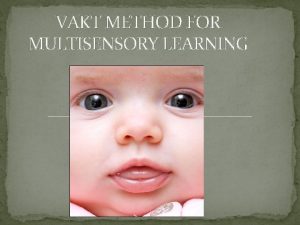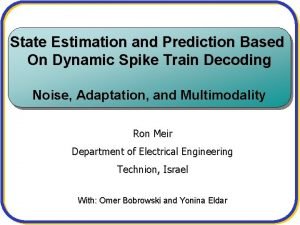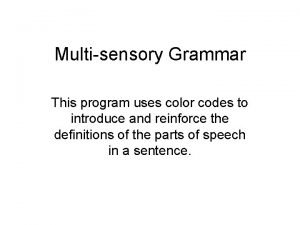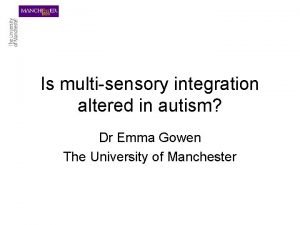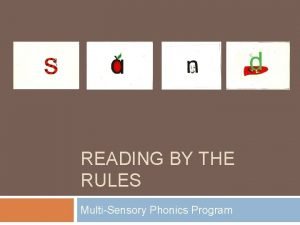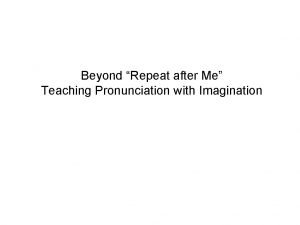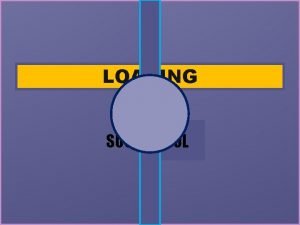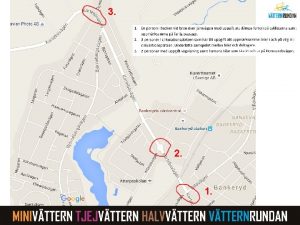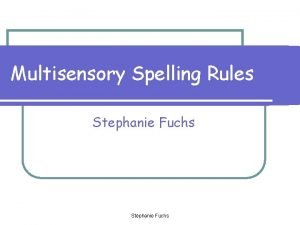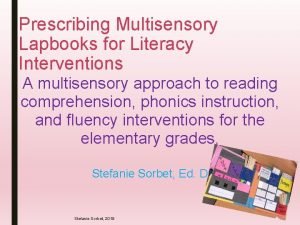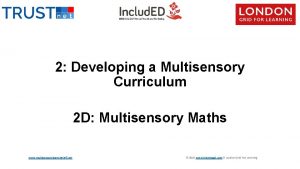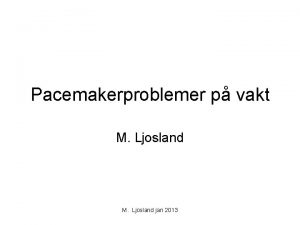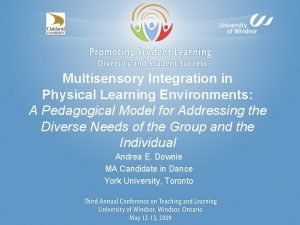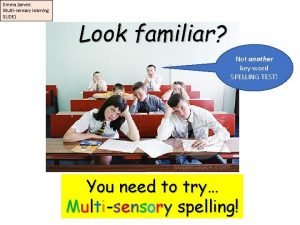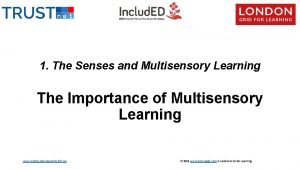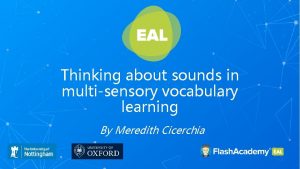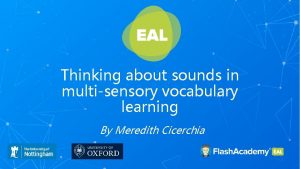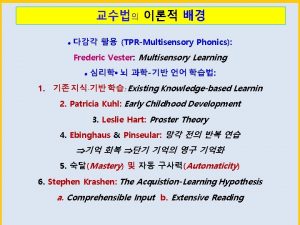VAKT METHOD FOR MULTISENSORY LEARNING What is VAKT













- Slides: 13

VAKT METHOD FOR MULTISENSORY LEARNING

What is VAKT? �There are four main learning styles. . auditory, visual, tactile, and kinesthetic. � Your child will learn best through one or more of these learning channels, and you can help him become a successful learner by teaching the child through his primary learning style(s). �When you see programs say they are "Multisensory", this means the instruction utilizes all, or most, of these channels in each lesson, and multisensory teaching is of benefit to all children.

Auditory activities include reading, listening, hearing, etc. These are channels used in a typical school classroom. At first you may confused because you may think, as I initially did, that reading is solely a visual activity. Reading is an auditory activity because it involves the language center of the brain and language processing skills which are auditory in nature. When you read, you "hear" the words.

�If you suspect your child might have dyslexia, you should know our neuropsychologist told us "Not all visual learners have dyslexia, but all children with dyslexia are visual learners. " Thus, the child with dyslexia will do better with visual teaching tools rather than learning through lecture, reading, and writing. Children with dyslexia take in information through watching - videos, movies, plays, demonstrations, etc. channels.

�They pick up TONS of information from their daily environment. Because of their visual learning style, children with dyslexia often enter school as BRIGHT, gifted kids, eager learners and soon get labelled otherwise because they are now being taught through their weakest channel. If you have a child who has "true dyslexia", then you will want to seek out instruction that uses primarily � the visual channel. Most children have a primary learning style, and a secondary style, so instruction will be most effective if it includes all learning

�For children with auditory processing problems, the visual and kinesthetic channels are most critical for content learning. A child with significantly impaired movement might find kinesthetic learning channels the most difficult to use. The key is to know what channel is most useful to your child and teach towards that learning style.

�Most children can learn through all channels and if they are taught through all channels they will have maximized learning because what they don't get from their main channel, they may get from another. Thus, the most effective instructional method for teaching *ALL* children is multi-sensory instruction.

�Manipulatives are excellent for kinesthetic and visual learners, since the manipulatives are both visual and moving. They would not be as effective for a child with visual processing problems. A child with visual processing problems would learn more effectively from the auditory and kinesthetic learning channels.

Activities to engage visual learners: �Visual: Movies & Videos Television Pictures Posters Murals Maps, Charts, Graphs Field Trips Computer Software Demonstrations Dramatizations Experiments

Activities to engage auditory learners: �Auditory: Read Alouds Debates Panel Discussions Informal Discussions Interviews Lectures & Speeches Books on Tape Text-to-Speech Plays Radio Broadcasts Music & Songs

Activities to engage Kinesthetic learners: �Kinesthetic: Games Models & Diaramas Math Manipulatives Letter Tiles, Scrabble Computer Software Arts & Crafts Hands-On practice Experiments Field Trips

Activities to engage Tactile learners: �Tactile: Arts & Crafts Clay modeling Gardening Dress-Up Math Manipulatives Painting Sewing Highlighting Computer Software

VAKT �http: //www. dyslexia-parent. com/VAKT. html http: //www. learningabledkids. com/home_school_info/learning_styles. html
 Vakt approach
Vakt approach Multisensory integration examples
Multisensory integration examples Multisensory grammar color code
Multisensory grammar color code Multisensory integration
Multisensory integration Multisensory phonics
Multisensory phonics Multisensory pronunciation
Multisensory pronunciation Contrived experiences
Contrived experiences När får du köra vakt med flagga
När får du köra vakt med flagga Cuadro comparativo e-learning y b-learning
Cuadro comparativo e-learning y b-learning Symposium method of teaching
Symposium method of teaching Iso 22301 utbildning
Iso 22301 utbildning Typiska drag för en novell
Typiska drag för en novell Tack för att ni lyssnade bild
Tack för att ni lyssnade bild Ekologiskt fotavtryck
Ekologiskt fotavtryck
